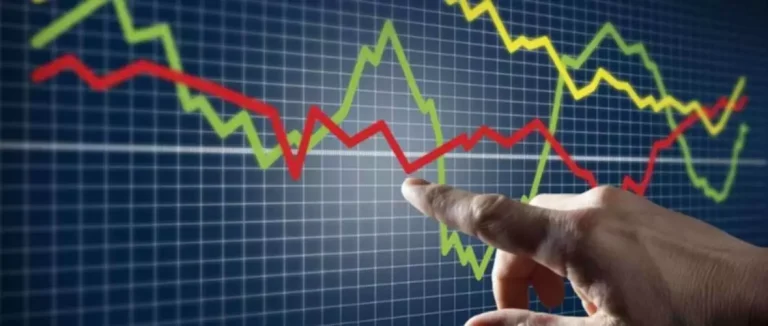What Is Day Trading & Why It’s a Bad Idea The Motley Fool
- Posted by Admin Surya Wijaya Triindo
- On February 1, 2023
- 0
But then a few months later, they’re stunned when the losses start piling up and they look up and realize they’ve lost all the money they put into it. This high-speed technique tries to profit on temporary changes in sentiment, exploiting the difference in the bid-ask price for a stock, also called a spread. For example, if a buyer’s bid price drops suddenly, the day trader might step in to buy and then try to quickly resell at the stock’s ask price or higher, earning a small “spread” on the transaction.
We recommend investing 15% of your gross income in good growth stock mutual funds inside of tax-advantaged accounts like your 401(k) and Roth IRA. Since mutual funds are made up of stocks from many different companies, they give you a level of diversification that single stocks don’t. Founded in 1993, The Motley Fool is a financial services company dedicated to making the world smarter, happier, and richer. The Motley Fool reaches millions of people every month through our premium investing solutions, free guidance and market analysis on Fool.com, top-rated podcasts, and non-profit The Motley Fool Foundation. While day trading may seem exciting and lucrative, it is effectively gambling with all of the potential upsides and risks you’d have betting through any other avenue. It requires a high level of risk tolerance and a great deal of practice to get right.
Still, a careful analysis of the market is critical if you hope to turn a profit. During the day, John will constantly monitor Apple’s intraday performance to react to unexpected market volatility and to adjust his profit-taking and stop-loss levels, according to real-time performance. Algorithmic trading involves execution of trade orders based on pre-programmed instructions based on price, time and volume of a security.
The increased use of algorithms and quantitative techniques has led to more competition and smaller profits.[31] Algorithmic trading is used by banks and hedge funds as well as retail traders. Retail traders can buy commercially available automated trading systems or develop their own automatic trading software. Individual traders often manage other people’s money or simply trade with their own. Few have access to a trading desk, but they often have strong ties to a brokerage due to the large amounts they spend on commissions and access to other resources.
Profitability and risks
You can make money day trading, but you’d be in very limited company. Day trading isn’t easy, and there are several areas of complexity that require research for new day traders. If you decide to become a day trader, it’s important to understand that day trading isn’t a get-rich-quick scheme. You will lose money along the way, and not all your trading strategies will pay off as you expect.
A lower debt-to-EBITDA ratio suggests a company might be less risky. Remember, past performance does not guarantee future returns, and never trade more money than you can afford to lose. This strategy tries to ride the wave of a stock that’s moving, either up or down, perhaps to due to an earnings report or some other news. Traders will buy a rising stock or “fade” a falling one, anticipating that the momentum will continue.
These rules address this risk by imposing a margin requirement for day trading calculated based on a trader’s largest open position during the day rather than on open positions at the end of the day. While some day traders can make money, studies suggest that the majority either lose money or underperform the market. Studies by professional economists suggest that most best day trading programs day trading strategies are no more effective than random chance. Day trading also involves a great deal of research, not only into the fees and commissions on their trades but also the relevant taxes and regulations. For example, day traders should be cognizant of the wash sale rule, which prohibits repeated transactions of the same security within a 30-day period.
Not only could you lose all the money you’ve invested, you could end up buried under a pile of debt too. Scalping is a faster version of range trading, also trying to buy and sell off small price changes to an investment. With scalping, a day trader may buy and sell hundreds of times daily for one investment, trying to earn a small profit from each tiny movement. Scalpers follow short-term price charts trying to find these trends. When the opening price shows a gap from the previous day’s close, taking a position in the opposite direction of the gap is known as fading the gap.
Day Trading Strategies
Their resources allow them to capitalize on these less risky day trades before individual traders can react. Most day traders who trade for a living work for large players like hedge funds and the proprietary trading desks of banks and financial institutions. These traders have an advantage because they have access to resources such as direct lines to counterparties, a trading desk, large amounts of capital and leverage, and expensive analytical software. Wise day traders use only risk capital that they can afford to lose. This protects them from financial ruin and helps eliminate emotion from their trading decisions. Professional day traders—those who trade for a living rather than as a hobby—are typically well established in the field.
The first rule of day trading is never to hold onto a position when the market closes for the day. Low bid-ask spreads are often critical for day trading success because they help to minimize transaction costs. Day traders may be employees of financial services companies such as banks and investment funds, as well as private individuals.

To understand how day trading works, readers need to know about the various intraday strategies used by traders. That means you must have at least $25,000 in the brokerage account you trade with in order to keep day trading—that’s not exactly chump change! 4 If your balance falls below that, you will need to deposit more cash into the account before you can continue trading. Day traders are not really what you would https://www.xcritical.com/ call “long-term” thinkers. Every day, they’re glued to their computer screens and televisions in order to stay up to date on the news and any trends that might give them hints about which direction a company’s stock will move that day. The steady rise of online stockbrokers and “do-it-yourself” investing apps makes it very easy for anyone with a smartphone or an internet connection to dabble in day trading .
Understanding Day Traders
Security is a type of financial instrument that holds value and can be traded… Over the years, John has traded Apple (APPL) shares extensively and is well-versed with developments at the iPhone maker. Whichever strategy you pick, it’s important to find one (or more) that work and that you have the confidence to use. It can take a while to find a strategy that works for you, and even then the market may change, forcing you to change your approach.
A primary reason day trading is a bad idea has to do with transaction costs. The two most visible transaction costs are taxes and fees such as trading commissions. Depending on the trading platform you use and the type of security you’re trading, you may also pay a commission every time you buy or sell a stock. Day trading can be extremely risky—both for the day trader and for the brokerage firm that clears the day trader’s transactions. Even if you end the day with no open positions, the trades you made while day trading most likely have not yet settled.
Range Trading
Stocks are among the most popular securities for day traders — the market is big and active, and commissions are relatively low or nonexistent. You can also day trade bonds, options, futures, commodities and currencies. When you buy a stock and then sell it within the same trading day, you might make money. But you’d also owe taxes on the gain, which is equal to the price at which you sell the stock minus the initial purchase price. The short-term capital gains tax rate is the same as the tax rate assessed on your ordinary income (e.g., the money you earn by working). During a typical trading day, Zack will watch metrics such as the Relative Strength Index and the Intraday Momentum Index to evaluate whether a particular stock is oversold or undersold.
- Day traders typically close out their positions at the end of the trading day, reducing their exposure to swings in the overseas markets.
- Intraday traders may have insufficient time for a position to see a profit.
- But you’d also owe taxes on the gain, which is equal to the price at which you sell the stock minus the initial purchase price.
- During a typical trading day, Zack will watch metrics such as the Relative Strength Index and the Intraday Momentum Index to evaluate whether a particular stock is oversold or undersold.
High-frequency traders are often arbitrage traders looking to profit from small price discrepancies in the same asset as traded on different exchanges. John aimed to trade using news-based trading and range bound trading techniques on the day of the result announcement. Day trading, in particular, has attracted plenty of contenders for its fast pace. However, this short-term trading strategy is risky and difficult to master. The emotional and psychological toll of day trading has left behind a trail of long-lasting health issues (both mental and physical), broken marriages and even suicide.
The paradox of day trading is that it may seem like a good idea, depending on how the stock market is performing. Day trading is essentially a play on the short-term volatility (or price movement) of a stock on any given day. Day traders buy a stock at one point during the day and then sell out of the position before the market closes. If the stock’s price rises during the time the day trader owns it, the trader can realize a short-term capital gain.



0 comments on What Is Day Trading & Why It’s a Bad Idea The Motley Fool